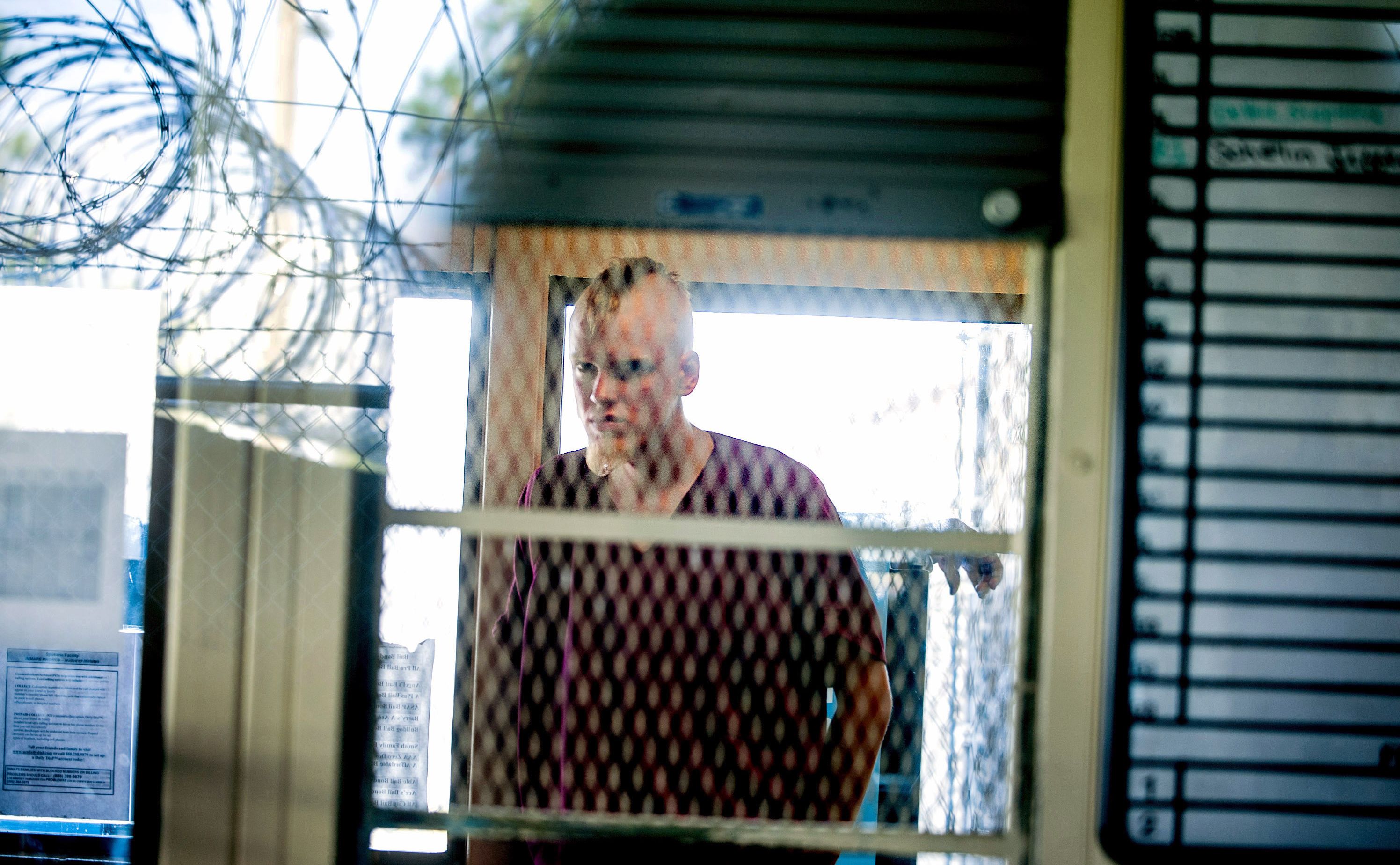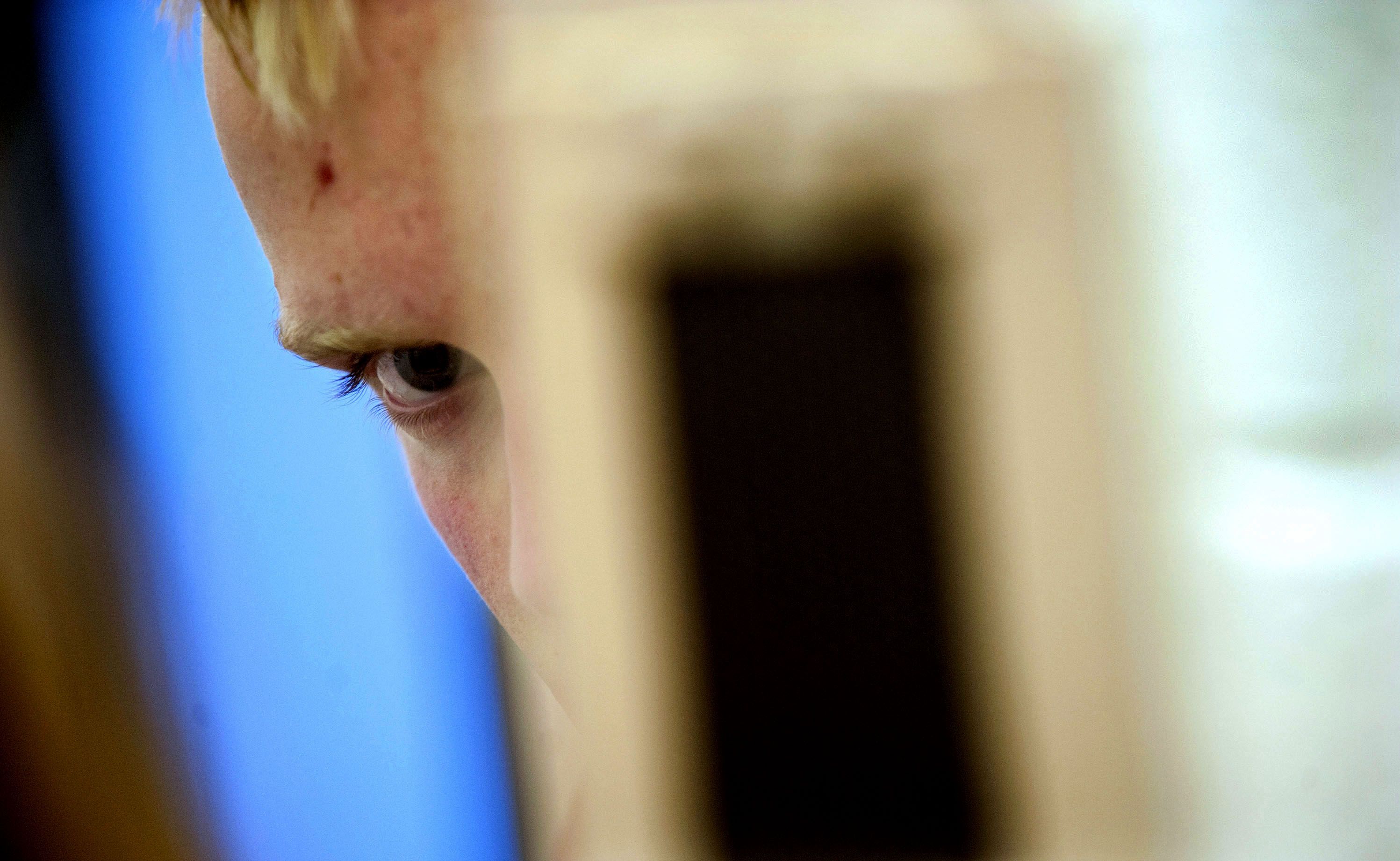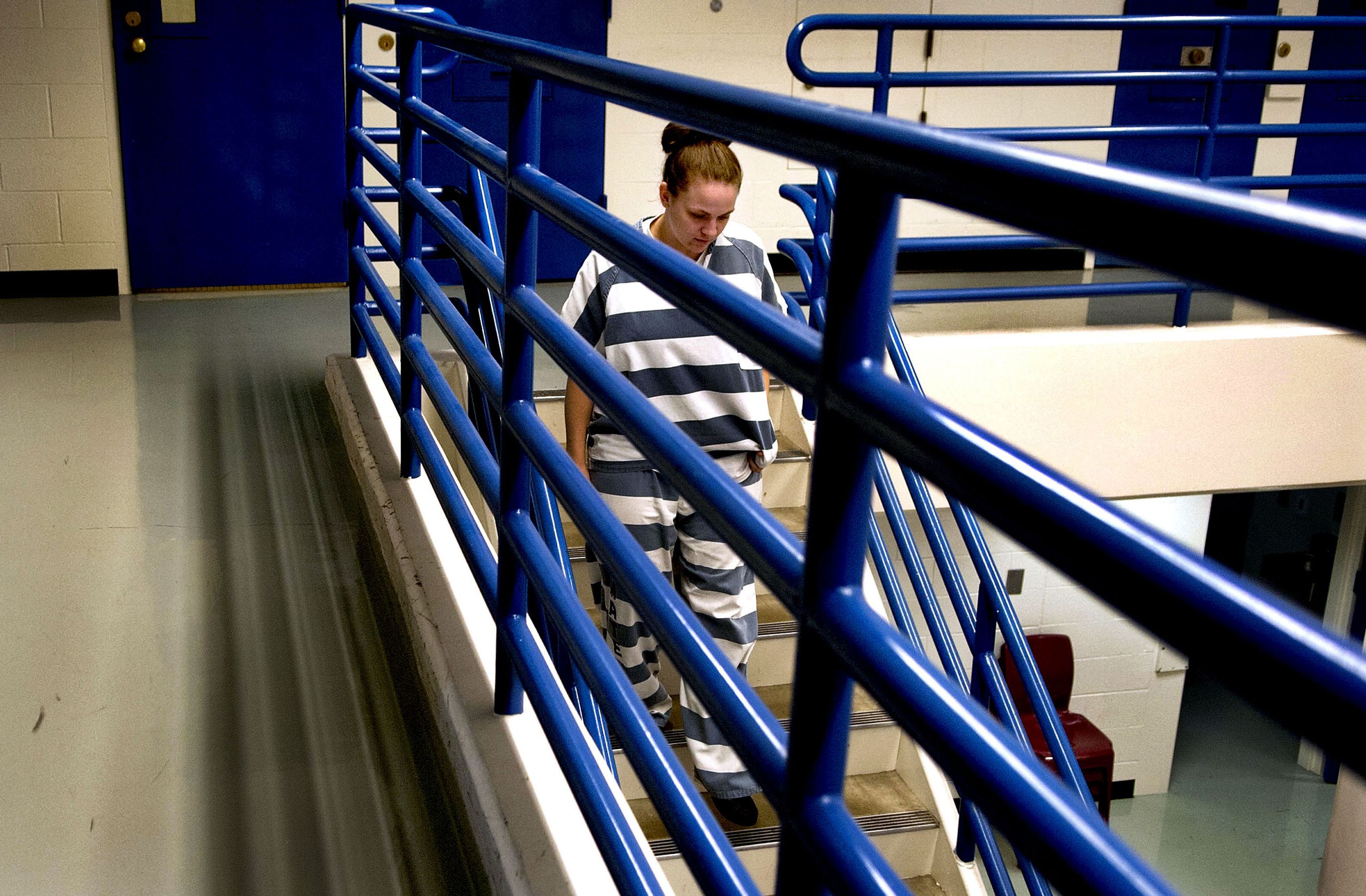Fixing foster care: ‘Where do I belong?’
Alkala Michener’s green eyes pool with tears as she recalls the night she lost her family: She was 7 years old, dressed in a Cinderella pink nightie, her lace-rimmed socks soaked and muddied as she ran away with her big brothers.
A social worker found the children wet and desperate to find their dad, running along a stretch of a north Spokane highway. The siblings were split up. Alkala went to a Newman Lake foster home and wouldn’t see her brothers again until they knocked on her door eight years later.
“For years, I had the impression (my family) didn’t want me,” she said.
Her story is all too common in Spokane County, where children are pulled from their families at three times the rate of those in King County. There are 985 children in Spokane foster homes, the highest number in five years. And hundreds more children are caught in bureaucratic limbo – separated from family as overwhelmed caseworkers open new files faster than they can close older cases.
Now evidence is mounting that taking children from the home, even for their own protection, may not always be what’s best. What awaits too many of them is a future marred by drugs, crime and homelessness – the vestiges of abandonment.
“Where do I belong?” Michener asks today. “That’s something I’ve looked for my whole life.”
During the next three years Spokane-based Empire Health Foundation plans to invest more than $1.2 million to help the state’s foster care program keep families together and spur change within the embattled but well-intentioned system.
“The goal is reducing the number of children entering the foster care system by 50 percent,” said Antony Chiang, president of the region’s largest foundation.The Children’s Administration, a division of the Washington Department of Social and Health Services, is investigating 1,127 cases of maltreatment in Eastern Washington, and an unrelenting number of new reports of children in potential danger are pouring in.
The economic turmoil of the past seven years, including job losses and tighter state spending, is blamed.
“It’s a constellation of variables related to poverty and exhausted resources,” said Connie Lambert-Eckel, director of Children’s Administration operations in Eastern Washington.
She added, “Families are really just adrift.”
Michener can only imagine what would have happened had someone stepped in to keep her family intact while helping her parents quit drugs.
She is now 25 and in jail. Her young-adult life has been a train wreck: injury, drug addiction that began with pain pills and ended with meth, jail, an escape, and more jail.
The first time she fell under the watch of state social workers she was 3. Her parents were ratting each other out for drugs and crimes during a child custody fight, and investigators took notice.
Eventually the four Michener children were allowed to go home with their father, who later remarried.
Their mother disagreed with the decision. She piled the kids into a car, drove them to Children’s Administration offices and left them.
“I guess she thought: If I can’t have them, no one will,” Michener said. Eventually the kids were returned to their parents. Their mom and dad continued fighting and the state’s involvement deepened.
“By the time I was 7, I’d grown up,” Michener said.
Keeping families together is rare
Children enter the state system in one of three ways: Police deem their home life unsafe, a health professional suspects abuse, or a state investigation confirms the child is in danger.
“We see multigenerational neglect related to poverty, under- and un-treated substance abuse, fairly complex abuse,” Lambert-Eckel said. “But overwhelmingly what we see is child neglect, 60 to 80 percent. There’s not enough food. A child is left in a car seat in front of a television all day. No access to school. Inadequate access to medical care.”
A judge makes the final decision whether the child should be taken from the home.
Now, Children’s Administration officials are recognizing it’s time to change what they’ve done for decades.
It will take years and cost millions of dollars.
“We can’t keep de-funding children’s services and expect that we are not going to have a negative impact on children,” said Kevin Quigley, secretary of the Department of Social and Health Services. “The budget today for children’s services is almost the same as it was in 2007. It’s almost an inconceivable fact.”
The state spends about $500 million each year on child welfare, including about $96 million for foster care.
Quigley applauded the leveraging of local dollars from charitable groups such as the Empire Health Foundation, but said it’s not enough.
“The problems we face in the child welfare system is measured in the billions,” Quigley said. “There’s no number that takes the number of child abuse cases to zero, but there’s certainly a number that helps us do our job, which is to respond to cases of neglect of abuse and do a better job of reconciling families.”
The number of children sent to foster homes peaked six years ago as the recession gripped families, wiping out jobs and cutting government programs designed to help.
In July 2008, then-Gov. Chris Gregoire instituted a policy of no new hires. In following years, DSHS had significant reductions, falling to 16,000 employees agencywide from 20,000 in two years.
During that same time, the agency consulted with experts regarding chronic neglect cases. They determined that DSHS may have been erring on the side of caution by pulling too many children from their homes.
Programs that keep families together remain rare despite the growing recognition that most children do better with their biological parents.
“We know the outcomes for kids are the best when a child can stay with their family and community of origin,” Lambert-Eckel said.
Hard proof, however, is hard to come by.
“What we don’t have is many direct comparisons between high-quality foster care programs and high-quality in-home service programs,” said Richard P. Barth, dean of the School of Social Work at the University of Maryland, who has overseen more than 40 studies, most involving child well-being.
Knowing that most children do best with their biological families has put urgency behind understanding why Spokane children are being removed at such a high rate.
“We are continuously analyzing and assessing why there’s that disparity,” said DSHS spokesman John Wiley. “But we really don’t have an answer for that. We are looking at it and trying to get a handle on it.”
Many foster children run away
In and out of foster care for years, Alkala Michener said she vividly remembers the destruction of her family.
Barely tall enough to see over a countertop, her stepmother drove her and one of her brothers to the offices of state social workers. Savage Garden’s “I Want You” pulsed from the car’s speakers. Michener leaned over to give her brother a hug and saw the social workers walk to the car. She wanted to run.
“I begged my guardian ad litem not to take me away again,” she said. “The adults tried to calm me down.”
Foster care is at the heart of the state’s efforts to protect children. There are 5,017 foster homes statewide, 1,017 of them in Eastern Washington. That’s about one-third the optimal number needed, said Lambert-Eckel.
When kids are removed from their homes, they are placed in an emergency shelter, a temporary foster home or a long-term foster home that tends to their needs while their futures churn through the courts.
As loving as many foster parents can be, Michener says many children call it “stranger care.”
Three of the Michener children were taken to a foster home they’d been to before.
The woman “looked at us and said: ‘If you guys are going to run away, just go out my front door. Don’t wreck my house.’ ”
Within days they had hatched plans to return to their dad, not knowing he’d been jailed again.
As rain fell that night, they heaved a twin mattress from their second-story window for a soft landing.The children took the same path.
Hauling a beige canvas suitcase packed with new clothes from a recent shopping trip, Michener and her brothers trudged through the mud. She lost her shoes and ripped her nightie.
As they fled down the highway shoulder, a car drove up and a social worker called out to her: “Alkala.”
“Don’t go. Don’t go,” her brothers yelled.
She was muddy and tired. She longed for a mother figure. So she walked to the car.
About 30 foster children run away in Spokane County every month.
Reducing that number is among 21 outcomes the Children’s Administration agreed to fix in response to the important Braam vs. State of Washington settlement. Attorneys filed the class-action lawsuit in 1998 on behalf of foster children who’d been shuffled to foster homes more than three times. They claimed the state did not provide constitutionally mandated care for foster children.
The settlement reached in 2004 assured better conditions including monthly health and safety visits to foster homes, sibling placement, sibling visits, annual mental health and substance abuse screens, and a reduction in caseloads for social workers.
The state continues to work on meeting those benchmarks and is asking for more than $10 million to help with compliance, including the hiring of 18 more social workers in January 2015 to assist with placement stability, especially for youth at high risk of running.
Children in foster care “run because they feel a foster family is too strict, or because they want to be with a boyfriend or girlfriend, a sibling or parent, or because they simply prefer to stay with friends,” said Wiley, the DSHS spokesman.
He adds, “We absolutely recognize the potential safety threats to children on the run,” and there are seven social workers statewide whose job it is to find children who have run away.
In July, 105 children ran from foster care statewide out of 10,412 in the state’s custody.
The Michener children were found quickly after leaving their foster home, but what happened next – their separation – might have been avoided under today’s state requirements.
“My foster mom is an amazing woman,” Michener said. “If it weren’t for her, I wouldn’t have any sense of normalcy.”
She helped Michener thrive.
And then eight years later, when Michener was 15, her brother knocked at her foster home’s front door. She recognized him as shock and happiness flooded her. Then she grew angry. Her father and brothers had reunited years earlier and knew where she lived. She knew little about what happened to them after that rainy night when they fled their foster home.
“I honestly wish I hadn’t met my family (again) when I was 15. I hate to say that because I love my family,” she said. “But it changed my innocence. I remember the first time I smoked pot with my brother, he said: ‘Now, you’re a Michener.’ I was so proud because I finally belonged somewhere.”
‘It’s not safe anymore’
The night police came for Joseph Enke he was 6 years old.
He’d been put in charge of his younger sisters, ages 4, 2 and almost 1, a common occurrence.
“I was trying to put Madison to sleep, and Katelyn didn’t want to sleep. She kept crying,” Enke said. No one had eaten dinner because there was no food in the house.
Fists thundered on the front door.

“It’s not safe anymore,” police said.
“My parents were drug addicts and gangsters. Not much a 6-year-old can do about it,” Enke, 20, says from the Spokane County Jail. “I wasn’t mad at them. I was more mad at the cops.”
Enke is among jail inmates who answered a Spokesman-Review survey that asked about foster care.
Some 60 percent, like Enke, had been in state custody at some point during their adolescence, the survey showed.
Many have lost count of their jail or prison time. Yet the details about the day they were separated from family remains clear.
The respondents’ experiences confirm what decades of studies have revealed: Children involved in the foster care system often experience homelessness, early pregnancy, arrest, imprisonment, poverty, health problems, suicide and drop out of high school at higher rates than the general population.
Enke has abused drugs, “all of them,” he says, and he’s been homeless.
Fewer than 50 percent of Washington foster care children graduate from high school. That’s worse than any other group tracked in high schools, including children of migrant workers, the poor, those with limited English skills and special education students, according to the Washington Institute for Public Policy. Nationally, 65 percent of foster children drop out of high school. Less than 5 percent go on to earn college degrees.
A large study in the Midwest showed that 81 percent of young men who had been in foster care had been arrested by age 24.
Twenty-five percent were homeless.
Young women out of foster care also struggle; 63 percent were surviving on food stamps.
In Spokane County 25 percent of youth in the court system from January 2013 to June 2014 had been in foster care even though only 1 percent of all kids in the county had lived in foster homes during the same 18 months.
Of the 1,810 juveniles in Spokane County who skipped school more than 10 days in a year, or five days in a month, 11 percent had also been involved in foster care.
Childhood trauma is at the root of foster kids’ outcomes.
“There are a lot of adversities, and separating a child from a parent would be one of them,” said Dr. Robert Anda, a renowned researcher who has led groundbreaking studies into how traumatic childhood experiences influence adult lives.
Anda’s work includes the Adverse Childhood Experiences scale, which attempts to assign a numerical value to trauma that can be used to determine the probability of behavioral risks as adults.
At 6 years old, when most children are in first grade, sharpening reading skills and being cared for by attentive parents, Enke had already become a caregiver for his sisters. His responsibilities were beyond what some adults can handle. His parents were emotionally unavailable because of drug abuse.
The boy ranked high on the scale for Adverse Childhood Experiences, and separating him from his family added to that, making him 1,000 percent more likely to engage in at-risk behaviors.
“There’s a selection of kids in foster care who have problems before they go in,” said Barth, the University of Maryland dean. “Families don’t know what to do with them. Courts don’t know what to do with them, so they go into foster care and foster care isn’t particularly good at addressing those issues.”
The problems often include family violence, poverty, parental substance abuse or incarceration, and sometimes all of the above.
“We don’t really have that clear of an idea of how well a kid would have done if they hadn’t been in foster care,” Barth said.
Some of it depends on the age they entered foster care: About 20 percent of kids nationally are younger than 2. Teens often bring a history of problems.
Police removed the four Enke kids from their parents twice.
“We were back together for a week,” he said. “We celebrated by making homemade tortillas. Our parents said they cared about us and they were trying.”

Enke and his 4-year-old sister went to live with an aunt and uncle in Cheney. The other two girls grew up with other family members. He’s only seen them once in 14 years, but hears they are doing well.
Fixing problems in a home where children have been neglected “divides the family,” Anda said. “Why can’t it bring them together?”
Programs that preserve family are worth trying, Barth said. “The reason they are scarce is because it’s expensive.”
It’s hard to overestimate the importance to kids of belonging, Barth said.
“You certainly hear from foster kids that they really like being part of their family, people who look like them and have some of the same characteristics,” he said.
Treating the parents while keeping the kids together can work, but it depends in part on the quality of the intervention. It needs to help the family be more structured, to involve parenting classes and to help stave off homelessness and the other risks threatening families living on the margins.
Breaking the cycle
Michener’s foster mom put her on a path for success.
As a teen, she made the East Valley High School honor roll twice before she graduated. She went to Running Start, and before turning 20, she’d finished three years of college.
Then she got hurt in an accident and hooked on painkillers, and her promising future took a tragic turn.

Now with a son of her own who’s turning 6 as she sits in jail, Michener regrets she’s repeating her mother’s pattern – something she swore she’d never do.
When Michener’s son turned 3, she dropped him off at his dad’s house so she could get high.
“If someone had come to me and offered me treatment with my son, I’d have jumped at the chance,” she said. “Without him, I don’t have a reason to stop.”
Michener still harbors anger over the past, yet she has reconnected with her mother.
There’s one fact she can’t deny: “Even though my mom gave us up to indulge in her drug habit, you can’t break that bond.”
It’s why the state’s Children’s Administration and the local Empire Health Foundation are determined to make changes to keep families together.
“It’s a big shift in thinking,” said Chiang. “I know it will be challenging to get there.”